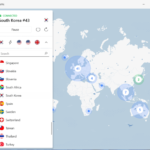Do you want to enhance your security game? That’s where Microsoft’s Authenticator app comes in.
Microsoft Authenticator is a two-factor authentication tool that works with a variety of apps and websites. Two-factor authentication (2FA) is far more difficult to crack than simply changing your password. As a result, many cybersecurity firms advise enabling two-factor authentication for all of your services.
2FA is a security solution that requires users to verify their identity using two methods. Apps that offer two-factor authentication, for example, may need you to provide a One-time Passcode (OTP) in addition to your account password.
It’s simple to set up two-factor verification using Microsoft Authenticator. Let’s have a look at what we’ve got.
Download and Install Microsoft Authenticator
To get started, go to your phone’s app store and download the Microsoft Authenticator app. While the software is downloading, ensure sure you have a Microsoft account because Microsoft Authenticator requires one.
It simply takes a few minutes to make a Microsoft account, so if you don’t have one yet, go to the Microsoft website and do so right now.
Open Microsoft Authenticator when it has been installed and login in with your Microsoft account. The app will prompt you to authenticate your identity during sign-in using secondary methods that you set up during the establishment of your Microsoft account. Choose the method you want to use and follow the steps. If you’re using a phone number as a secondary way, for example, click on it and input the verification code that was delivered to your phone.
The Microsoft Authenticator service will now be available.
Before we get into the app, one last thing to keep in mind: you’ll have to sign in to your account every time you want to update your security settings. You’ll get a notification on your phone that you need to open and input your phone’s lock screen passcode if you have Microsoft Authenticator installed.
Download: Microsoft Authenticator for Android | iOS (Free)
RELATED:
YOUR MICROSOFT ACCOUNT: 5 THINGS EVERY WINDOWS USER SHOULD KNOW
Using Microsoft Authenticator to Set Up 2FA on a Microsoft Account
Go to the Microsoft Account website and log in to enable two-factor authentication for your Microsoft Account.
Turn on two-step verification by going to Settings > Advanced security options > Additional security.
Before you enable two-step verification, make sure your account’s security information is up to date. Make sure everything is in working condition by following the on-screen directions. When you’re ready, click Next.
Note the recovery code that appears on the screen and write it down somewhere before pressing Next once more.
Finally, set up more apps by following the on-screen directions. Press Next once more if you’re using Outlook on an Android phone. Otherwise, for apps that don’t support two-factor authentication, follow the on-screen steps to generate a passcode. Then press Next once again.
When you’re finished with the configurations, click Finish.
You’ll need to sign in once more, so do so now.
If you don’t want to use two-factor authentication, you can enable a passwordless option for your Microsoft account. The Microsoft Authenticator software is used to log you in with this option. You won’t need to remember the password after turning this on, and you’ll be able to log in with just your phone.
Two-Factor Authentication Is More Secure… but It Isn’t Foolproof
With the number of security breaches and ransomware assaults at an all-time high, two-factor authentication and other log-in techniques are essential for safeguarding your online identity. On top of your password, these approaches add an extra layer of security.
However, two-factor authentication is not without flaws. Phishing attacks, for example, can deceive you into disclosing two-factor credentials.
To combat this, you must adhere to industry best practices to improve your online security. Set strong passwords, don’t use the same password for all of your accounts, and avoid visiting dodgy websites, to name a few examples.


![How to Configure Proxy Settings on Android Devices [FREE] How to Configure Proxy Settings on Android Devices [FREE]](https://windows10freeapps.com/wp-content/uploads/2024/12/setting-up-a-proxy-for-a-wi-fi-network-1-150x150.jpeg)



